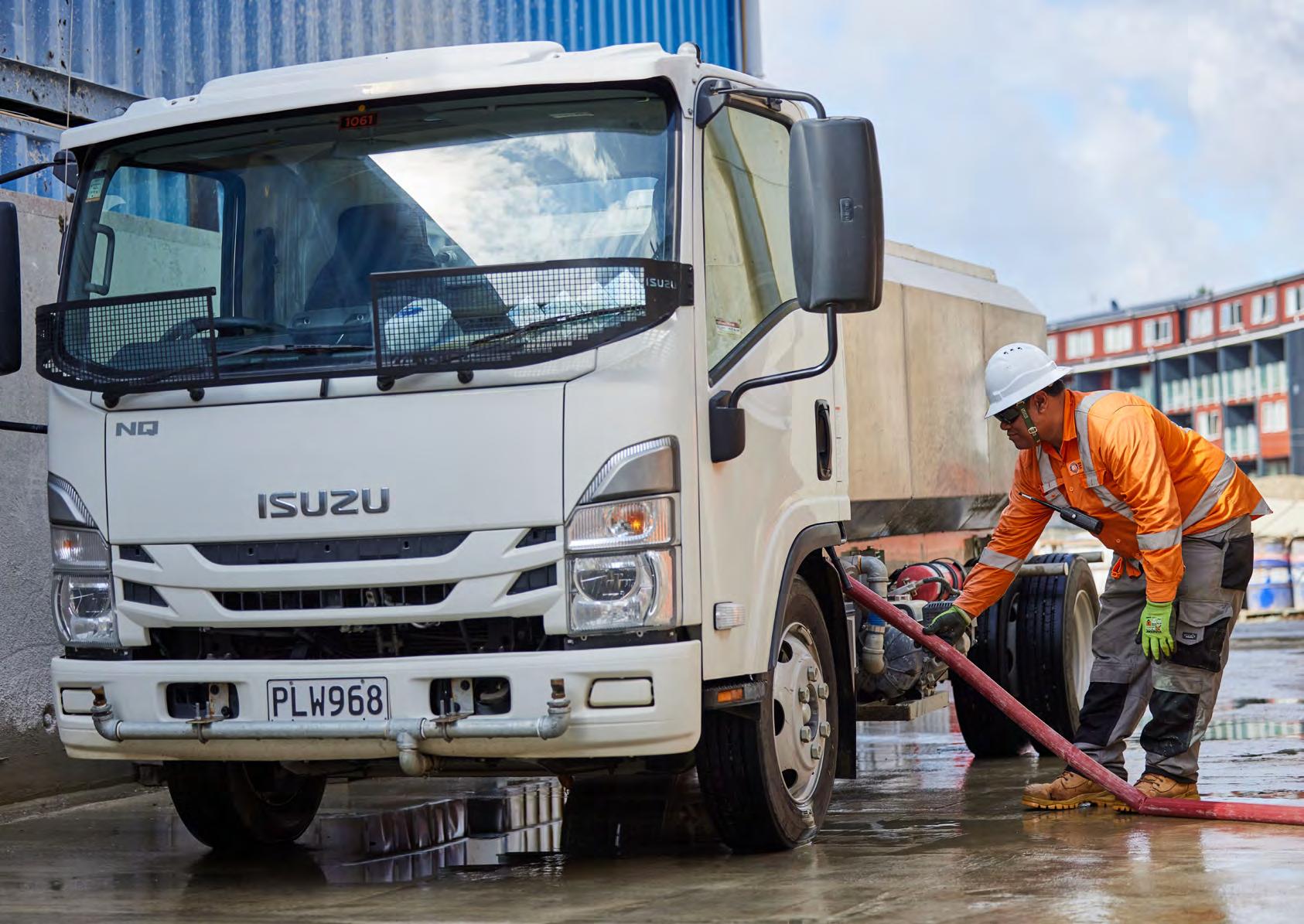
2 minute read
CASE STUDY
Mined versus Bored tunnels
Given City Rail Link uses a variety of tunnelling techniques it provides an opportunity to compare carbon footprints. It is well understood that using a TBM is a quick and cost-effective method of tunnelling but it is also worth noting that it is also a more sustainable method for long tunnels.
The embodied carbon of the materials used is 71% less per metre of tunnel than mined tunnelling, which uses shotcrete temporary lining and then cast-in-situ permanent linings.
Embodied carbon is the emissions associated with manufacturing and transporting the materials, the fibre-reinforced segments, cementbased grout around the outside of the segment and Stage 1 concrete to provide a flat floor to lay the tracks upon. Likewise, the construction energy footprint is 44% lower because TBM operations mainly use electricity sourced from Aotearoa’s largely renewable electricity grid, as opposed to the predominance of diesel machines used in the Maungawhau Station mined tunnels, (although at Karanga-a-Hape Station electric road-headers were used which reduced the construction energy emissions).
Bored tunnelling also tends to produce less waste, with segments produced in a controlled precast factory, meaning only minimal concrete wastage and moulds can be reused hundreds of times. Whereas mined tunnels require shotcreting which results in significant concrete wastage. Waste created by the bored tunnelling will also mostly be recycled or reused.
One resource that bored tunnelling uses more of is water. To reduce the impact of this the team have overcome a number of challenges to implement water reuse from the TBM’s large water treatment plant for part of the second drive. This enabled just under 2.5 million litres of water to be reused on site.

WaterLink Alliance developed projections of water use for both construction and operation of the CRL, with a target of reducing water use by at least 5% compared to a business-as-usual approach.

Although the majority (82%) of the water used on CRL will be during its operation, construction is still expected to use more than 340 million litres. Therefore, as well as designing the stations to be water efficient when operational, a lot of effort has gone into reducing potable water use during construction. A key approach has been to utilise non-potable water (water that is not of drinking quality) where possible.
The water treatment plants located on all CRL sites process all water collected on site and ensure it can be safely discharged into the stormwater network. These plants are a key non-potable water source, as is rainwater collected from roofs. Instead of discharging this water off site it has been used for washing the wheels of trucks before they leave site, for other site cleaning and for refilling the water carts that spray water on the ground to prevent dust being generated around the site.
The TBM has been one of the largest consumers of water on the project. It had been hoped to be able to use recycled water in the machine itself. However, testing of the water showed that despite it being of good enough quality to use in other applications, there was a risk that using it on the TBM might cause maintenance issues resulting in machine stoppages. As a result, the water recycling efforts for the TBM were focused on using the water in the support area for general cleaning of the conveyor belt, chute point and washing box.
Although total water use is tracking 14% below the original projection, the project has not been able to achieve the 5% water recycling hoped for at this stage, with 3.2% of all water used on site being from non-potable sources. Nonetheless, this is still over 8,598,000 litres sourced from non-potable sources, equivalent to 38 households’ annual water use.










